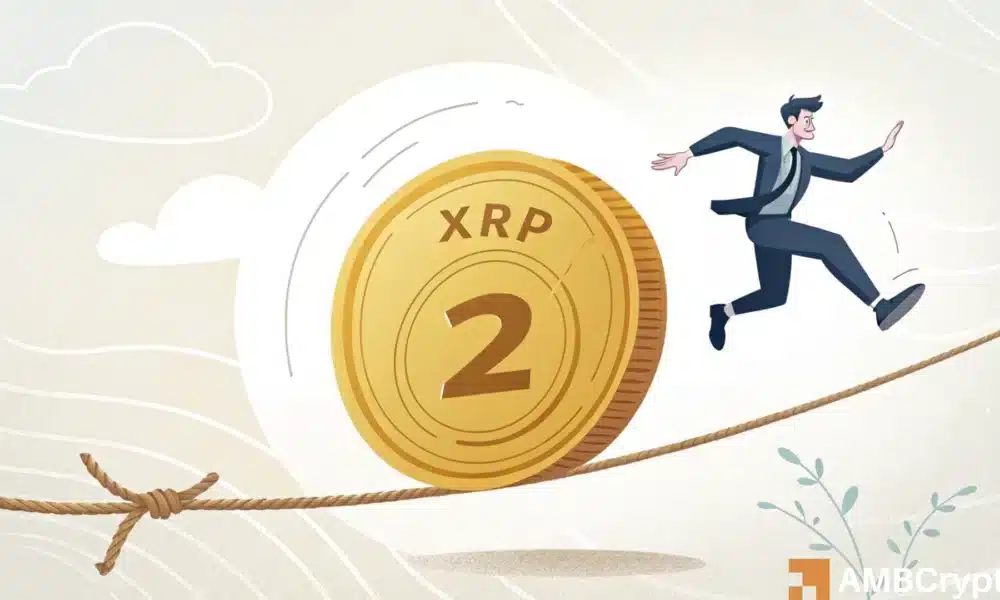XRP Price Strong at $2 Despite Potential Retreat
While the overall market sentiment is one of “extreme” fear, Ripple’s XRP is holding firm at the crucial $2 level, showcasing resilience during a challenging period.
Unlike many other major cryptocurrencies, XRP’s daily chart reveals robust support, with sellers unable to breach key levels, which bolsters its bullish framework.
Recent market trends show the RSI stabilizing and futures traders reducing their exposure to the lowest levels in three months, following over $1 billion in liquidations last week. As a result, Ripple is now poised for a potential recovery once selling pressure subsides.
Nevertheless, a nearly 41% decline in trading volume indicates a lack of strong conviction at the $2 mark, implying that this level has not yet solidified as a viable “buying opportunity.”
To sustain a lasting upturn, larger market participants must counterbalance the current wave of risk aversion.
Decision Time for XRP: Stand and Fight or Retreat?
Despite witnessing a notable increase in capital outflows from Binance, overall trading volumes are still significantly below the 1.6 billion mark seen in early February, when XRP dipped to $2.30 before bouncing back by 17% the subsequent week.
Retail investor activity remains relatively subdued for now, without any significant signs of FOMO. However, the number of whale wallets holding between 1 million to 10 million XRP has reached a three-month peak of 5.66 billion XRP.
Furthermore, wallets containing 10 million to 100 million XRP have amassed an additional 390 million XRP over the past three days, reinforcing the strength of buying interest in the market.
Thanks to this strategic accumulation, Ripple has managed to stay above the critical $2 support level, currently trading at $2.22 at the time of writing.
As futures traders unwind their positions and institutional investors absorb selling pressure, a clear price bottom is yet to be established until retail investors start re-entering the market.
The speculative positioning dynamics also play a crucial role, as an increase in leverage by futures traders alongside sluggish spot demand raises the risk of prolonged accumulation periods.
It is important to closely monitor liquidity trends and exercise caution in the face of ongoing market uncertainties.

